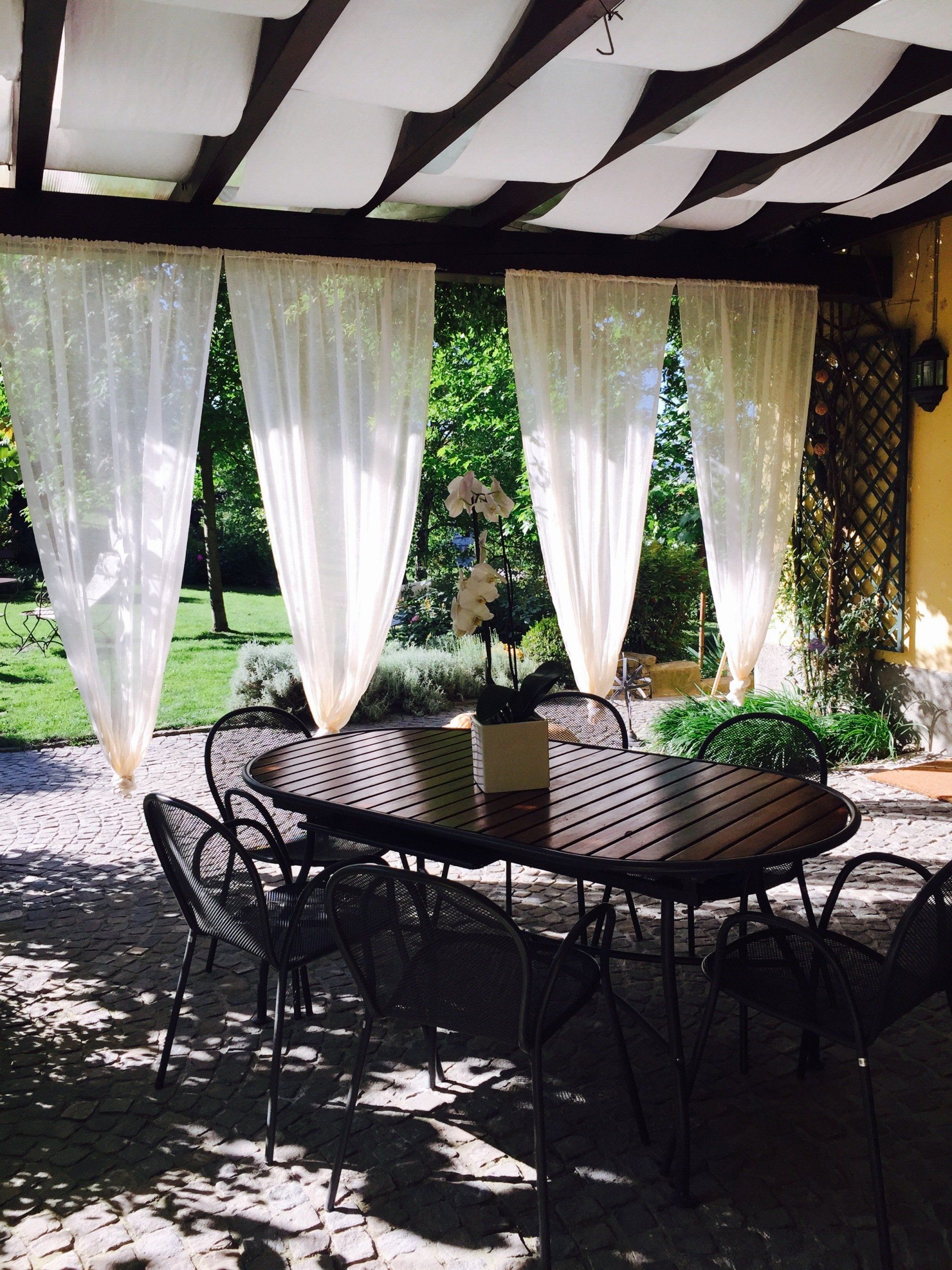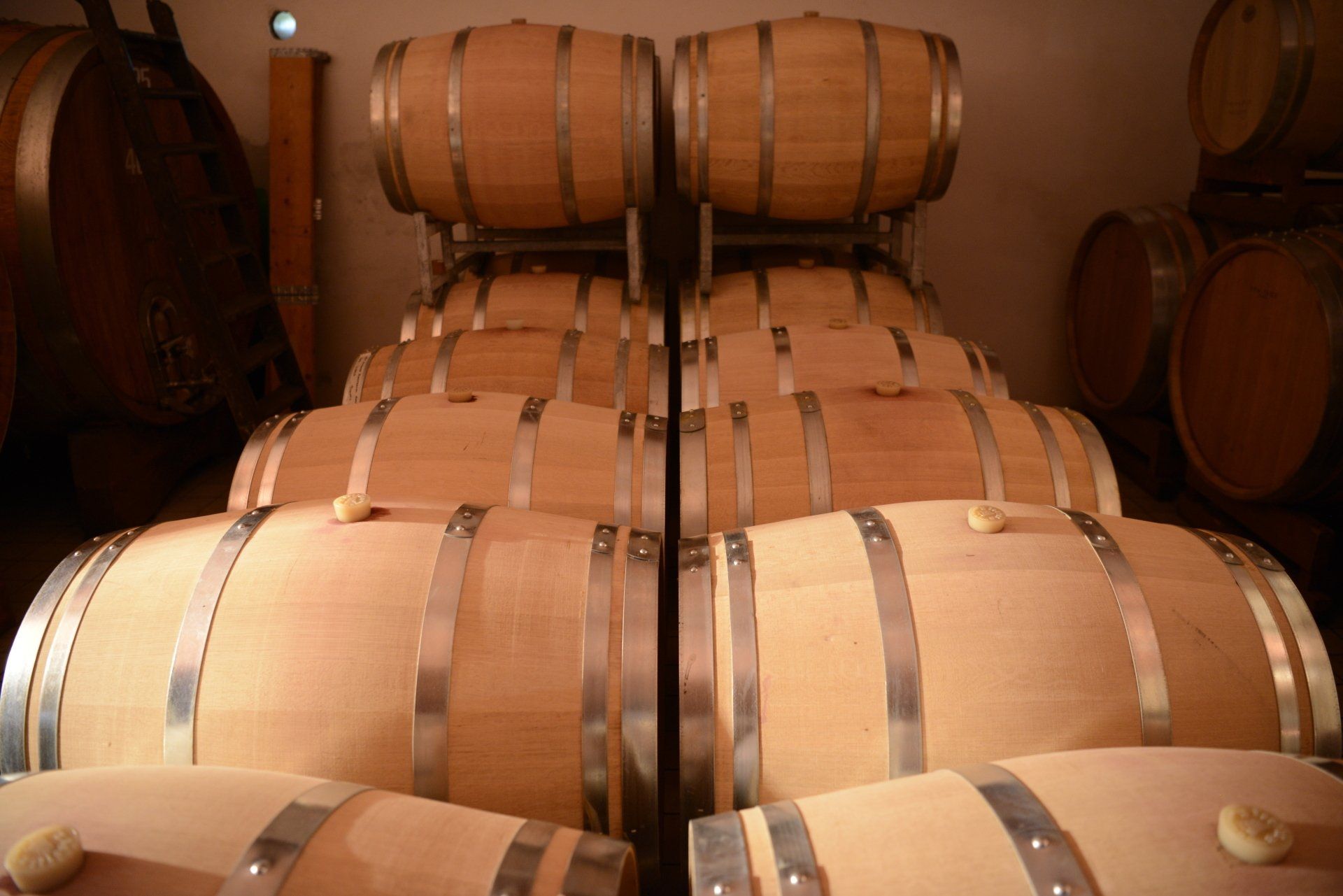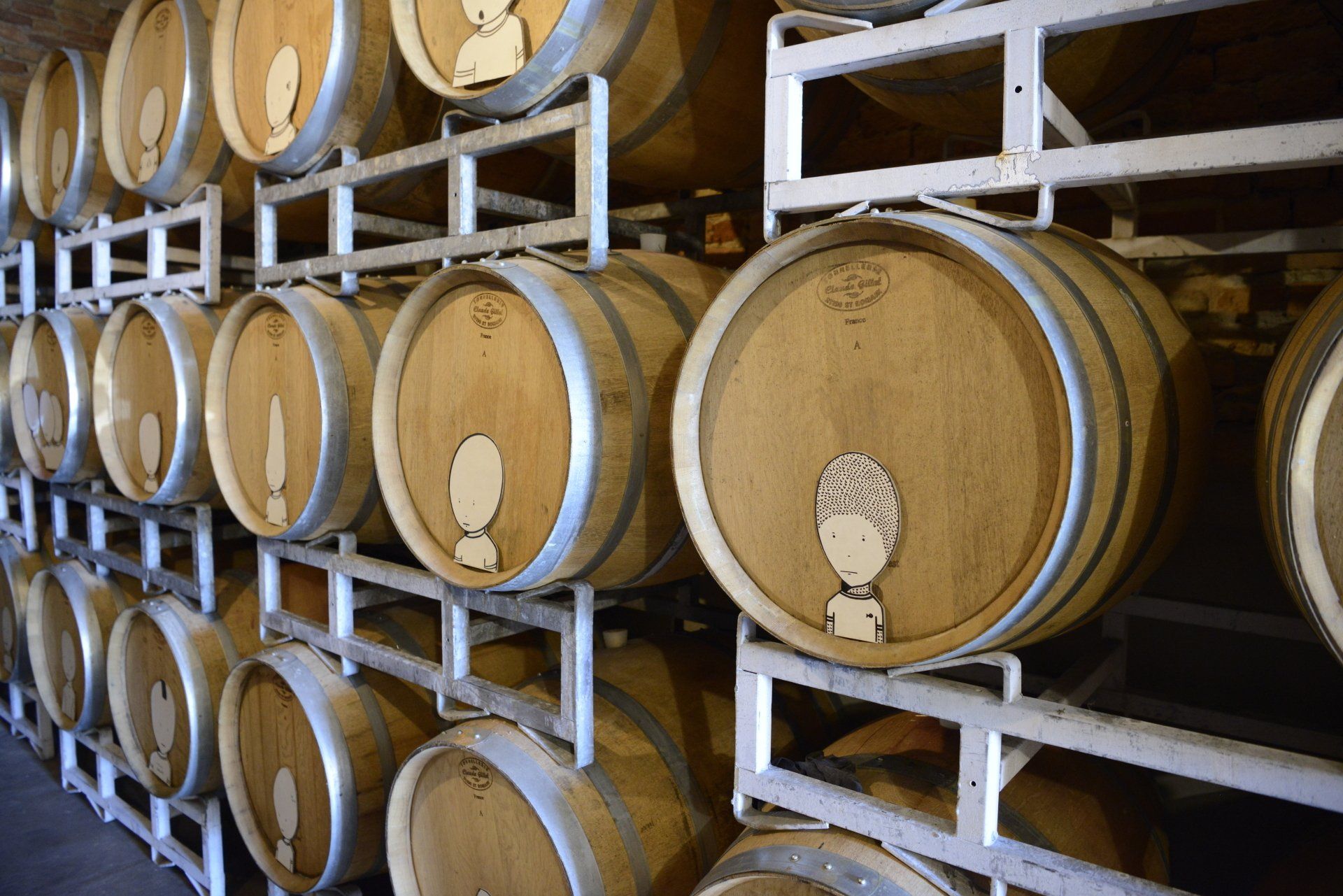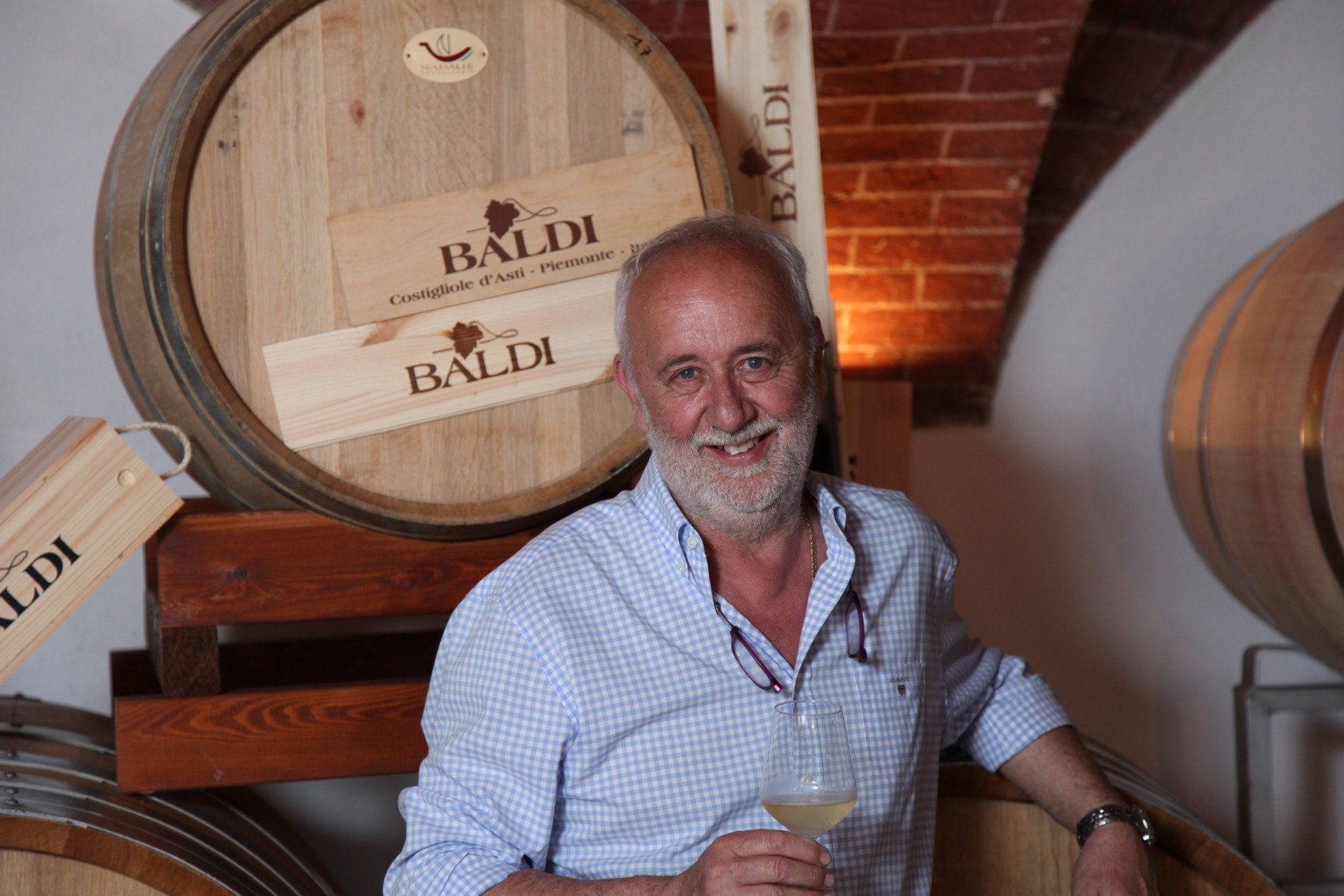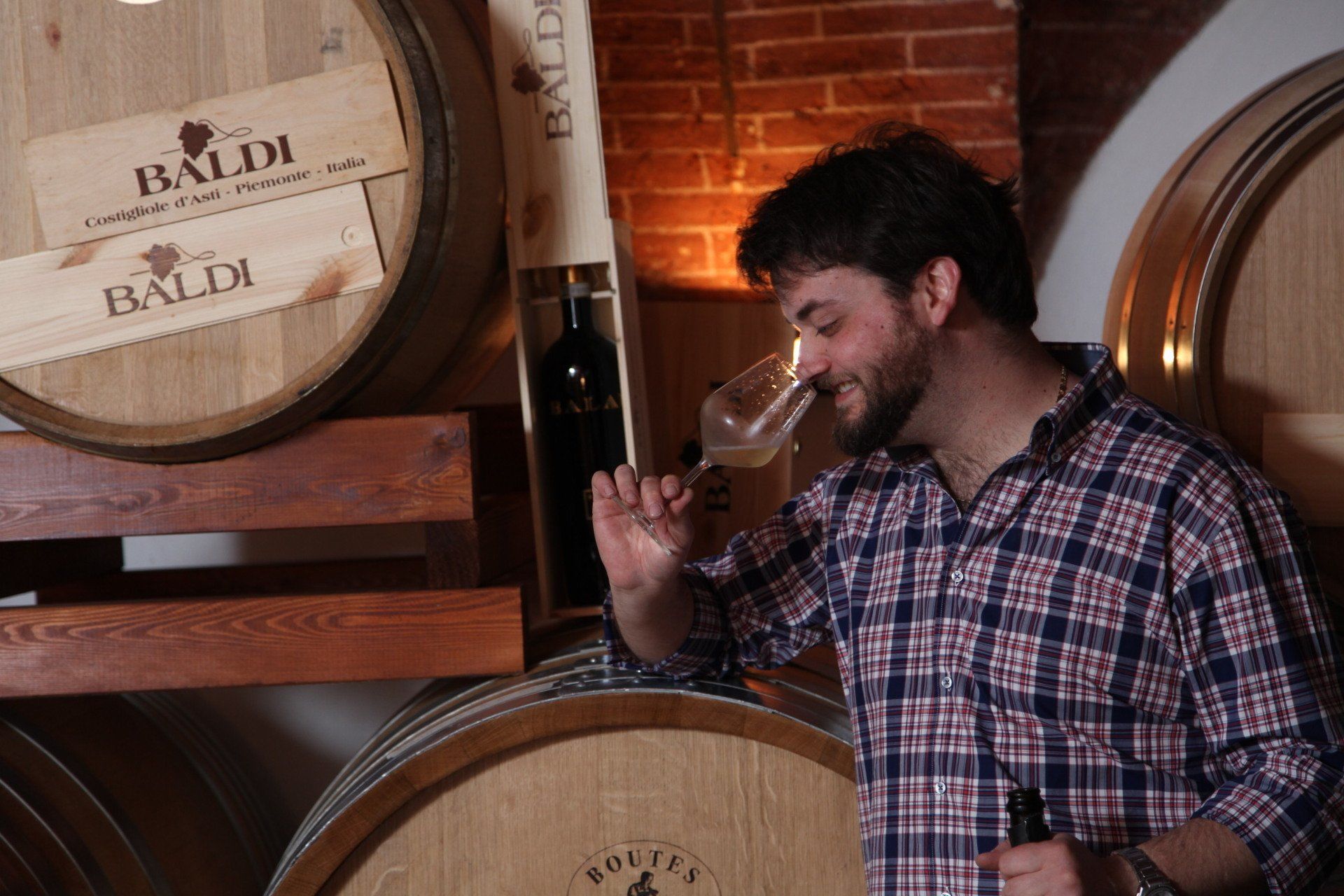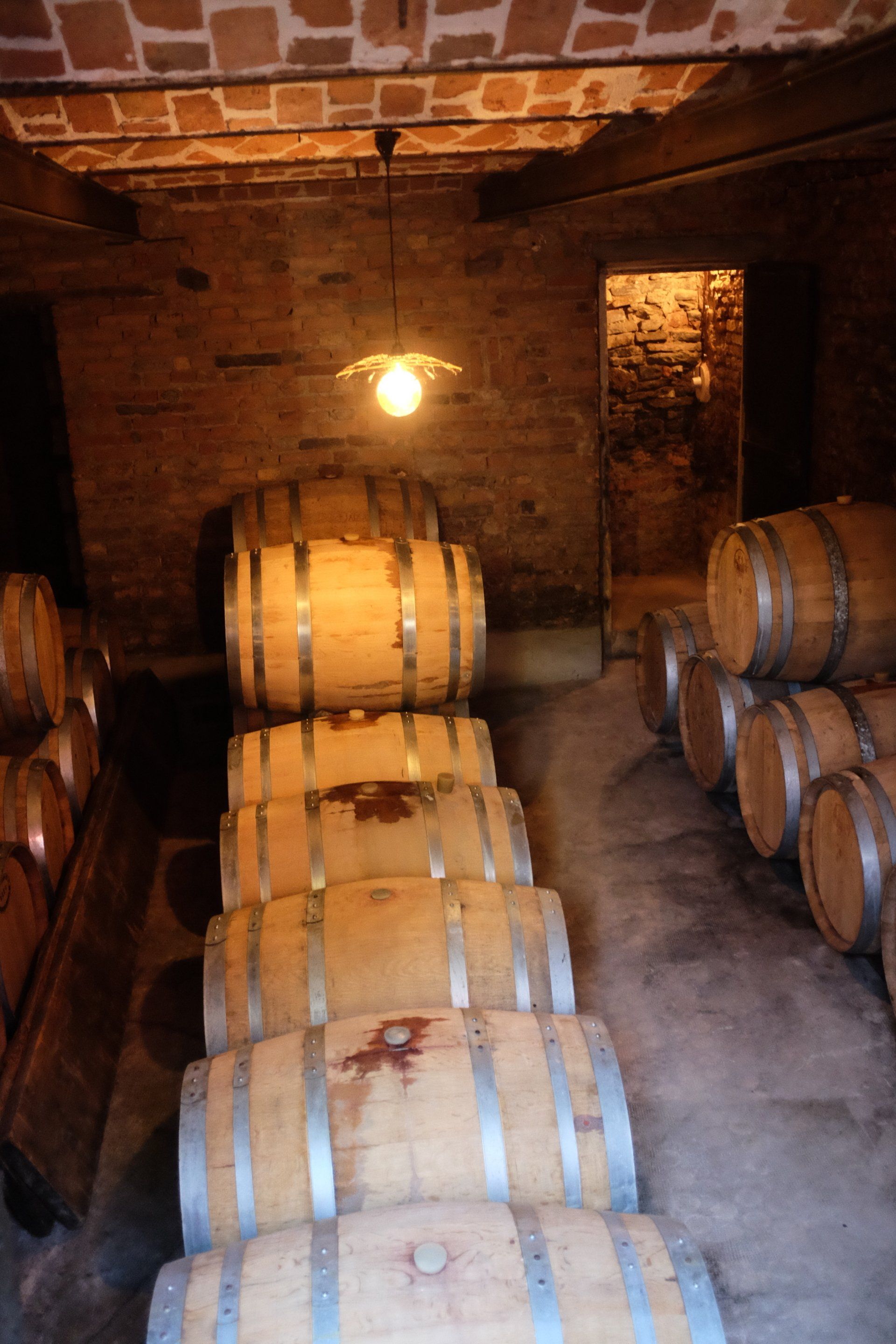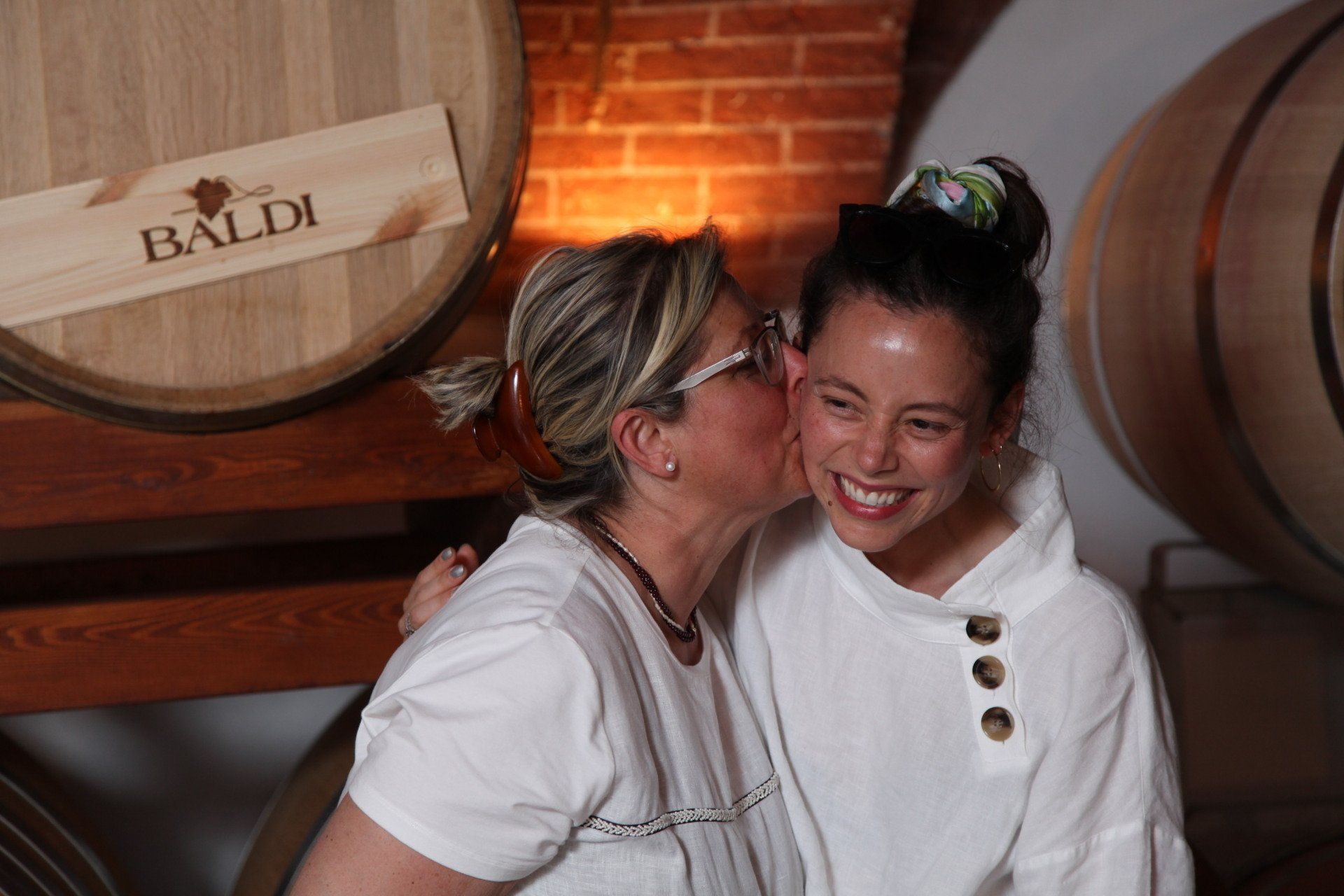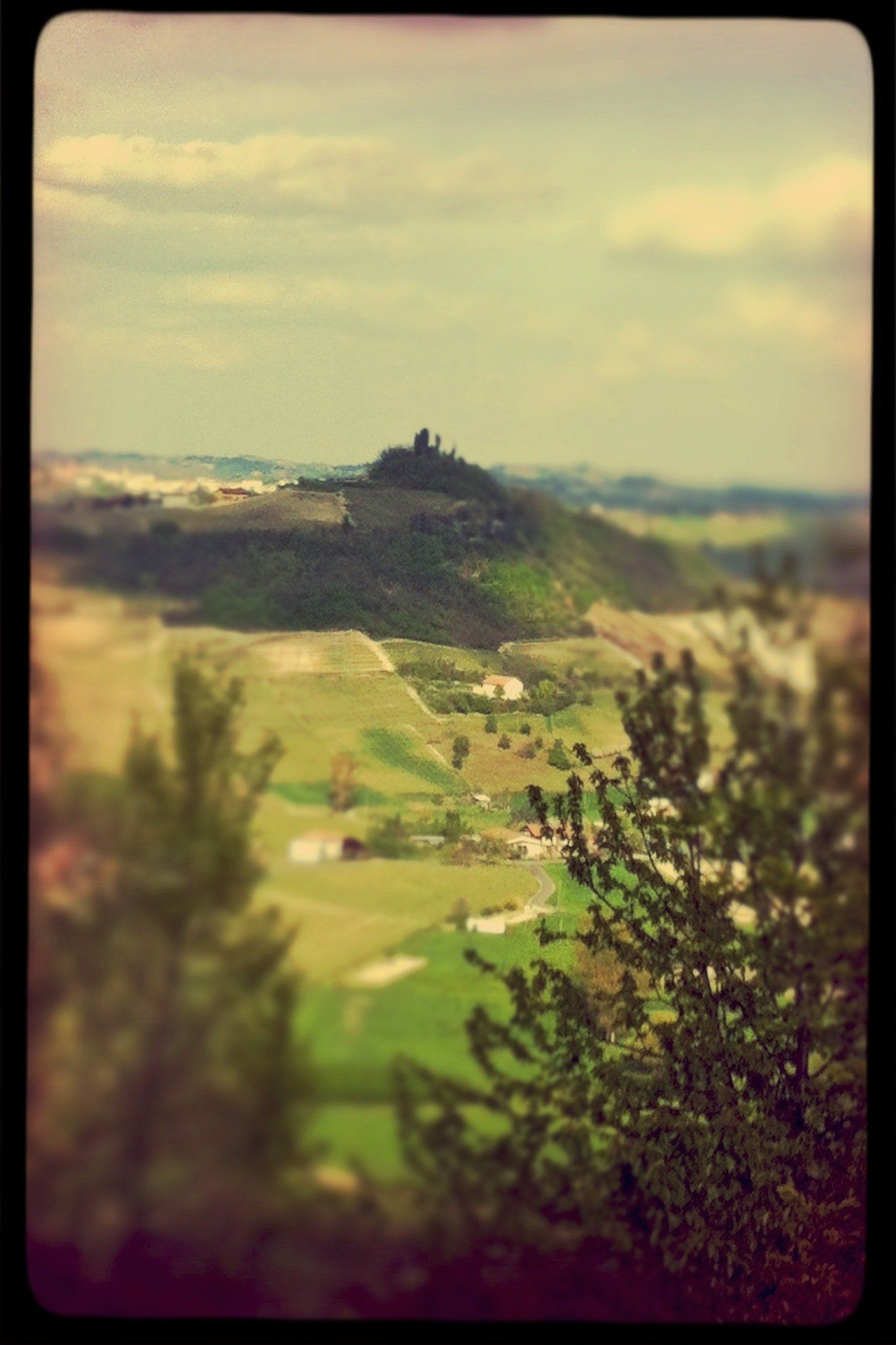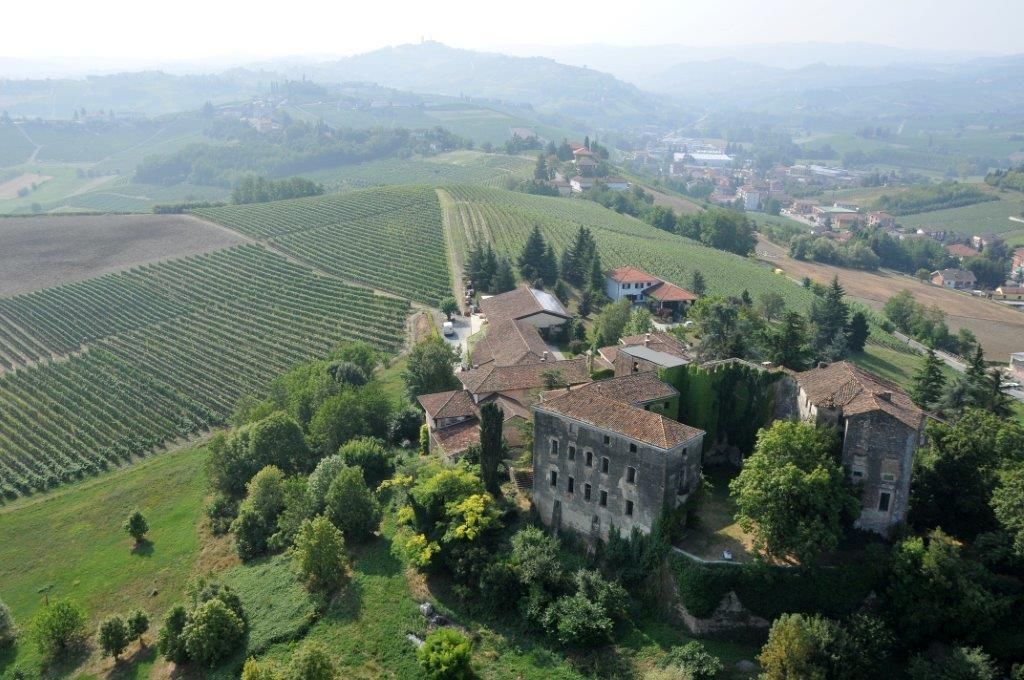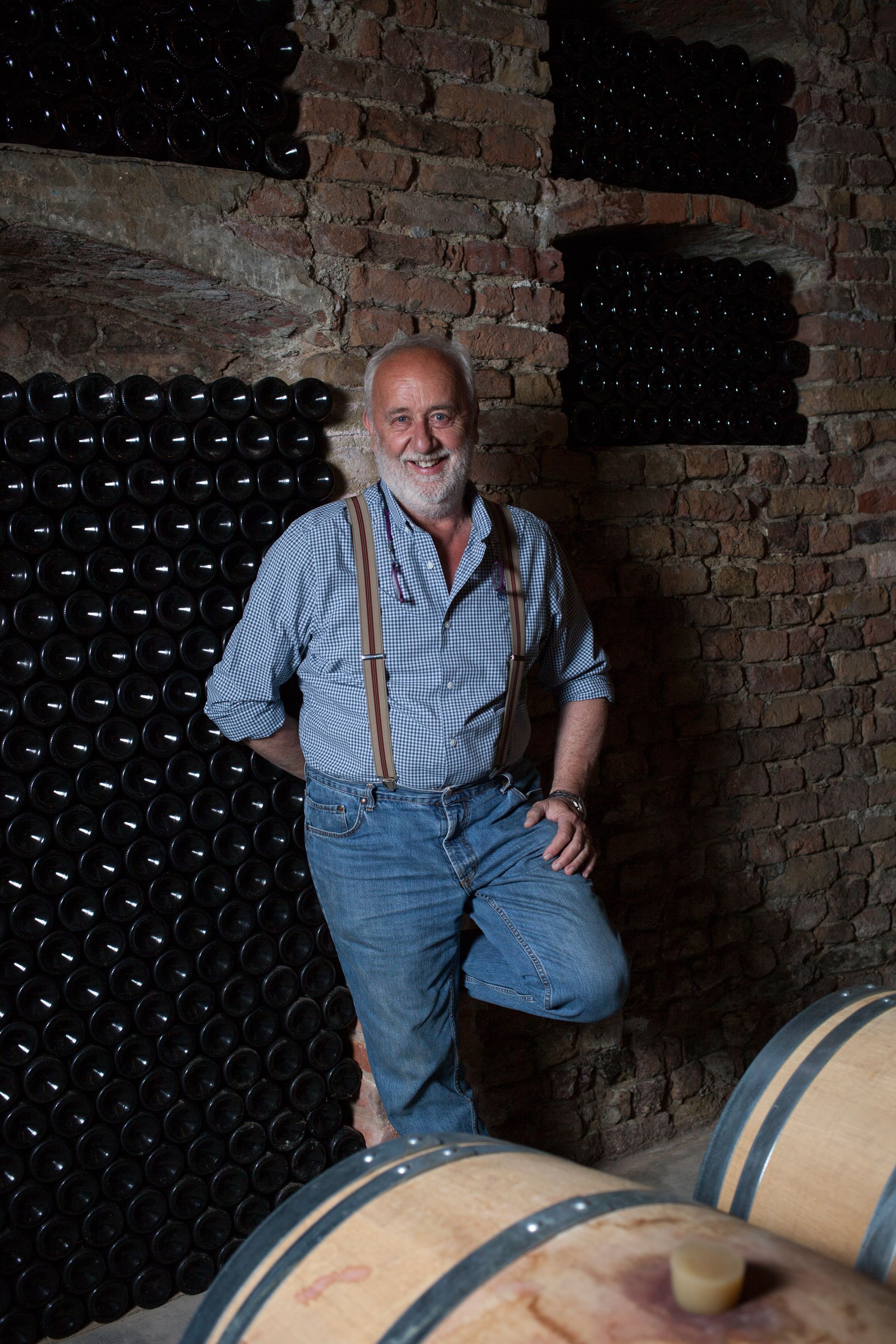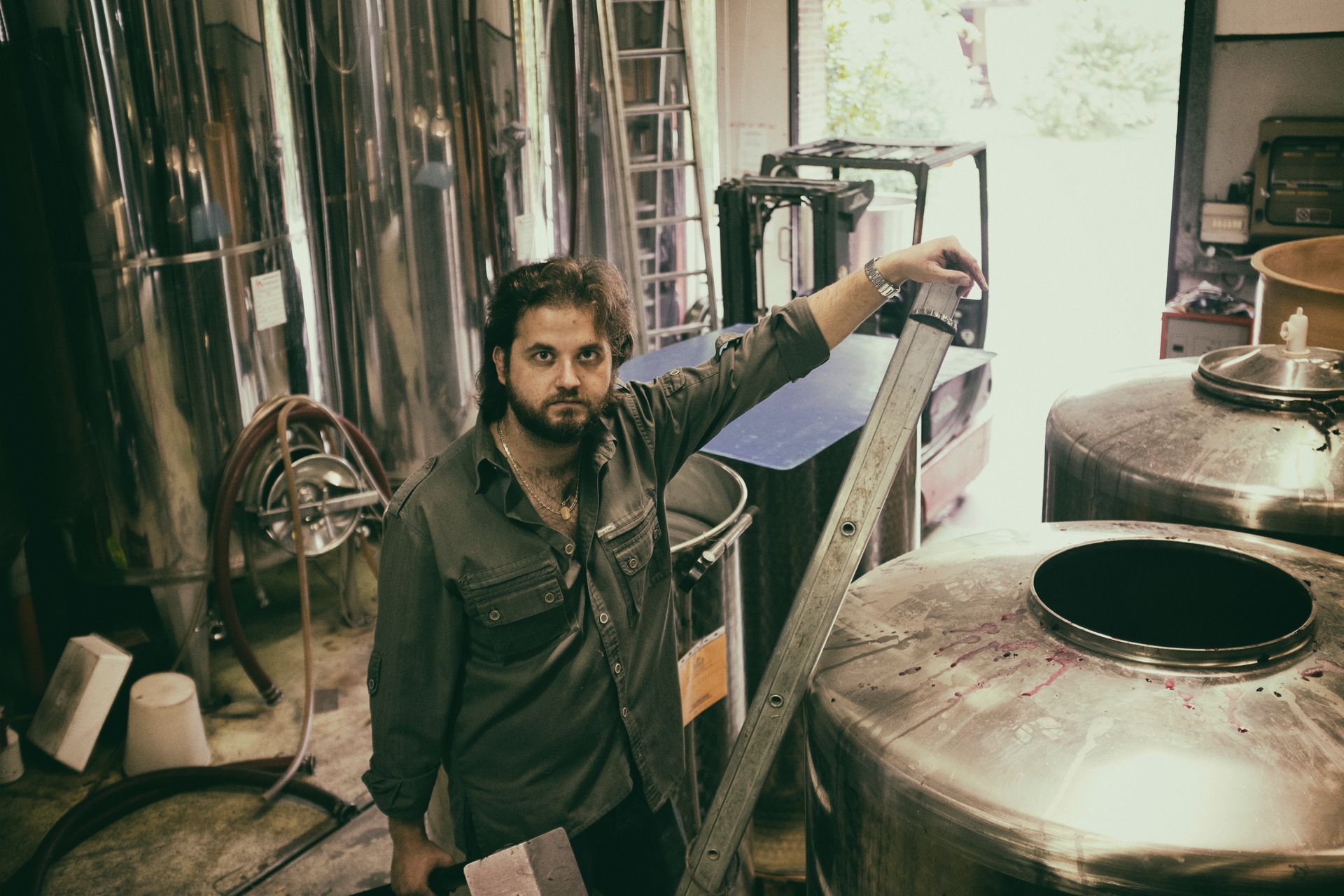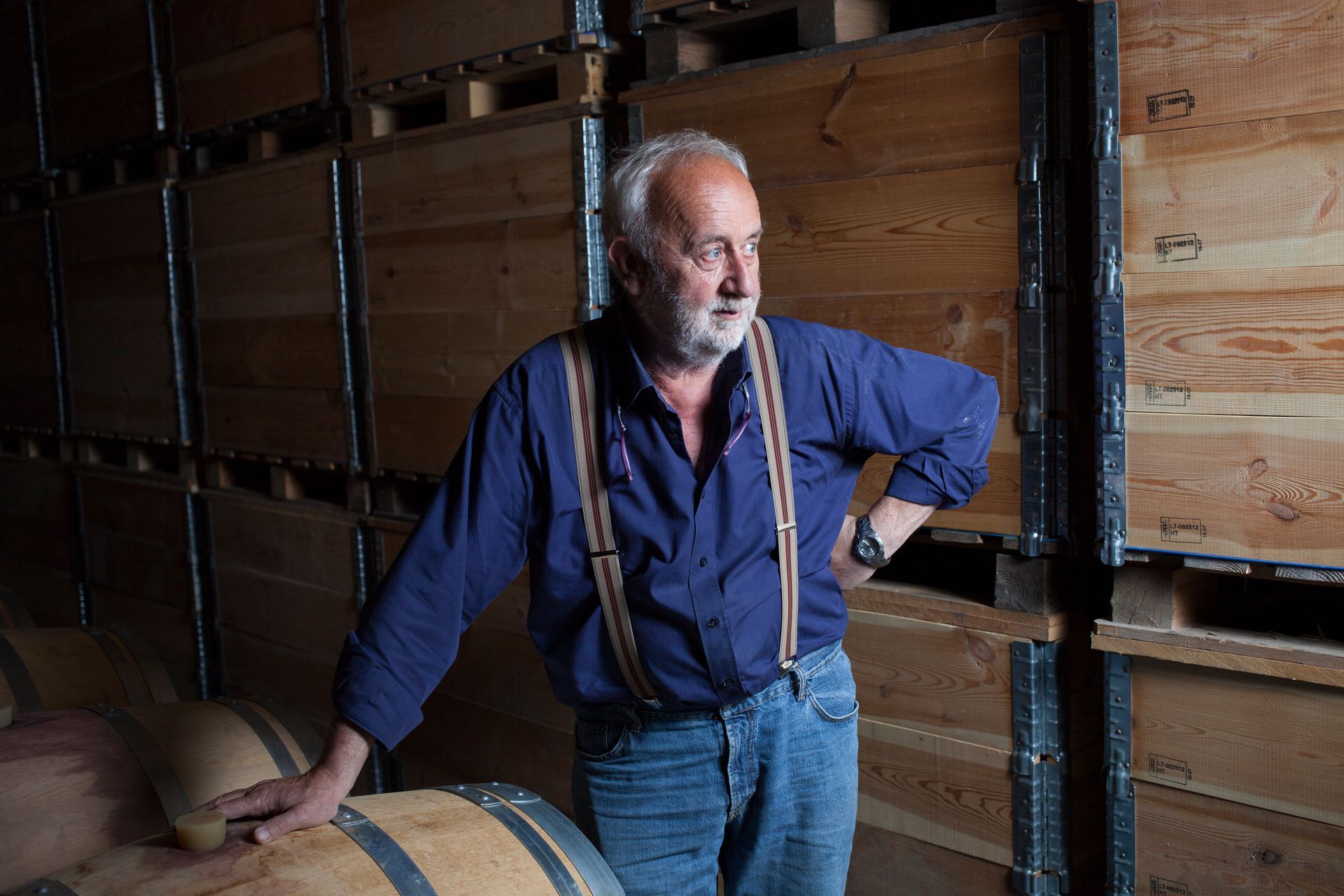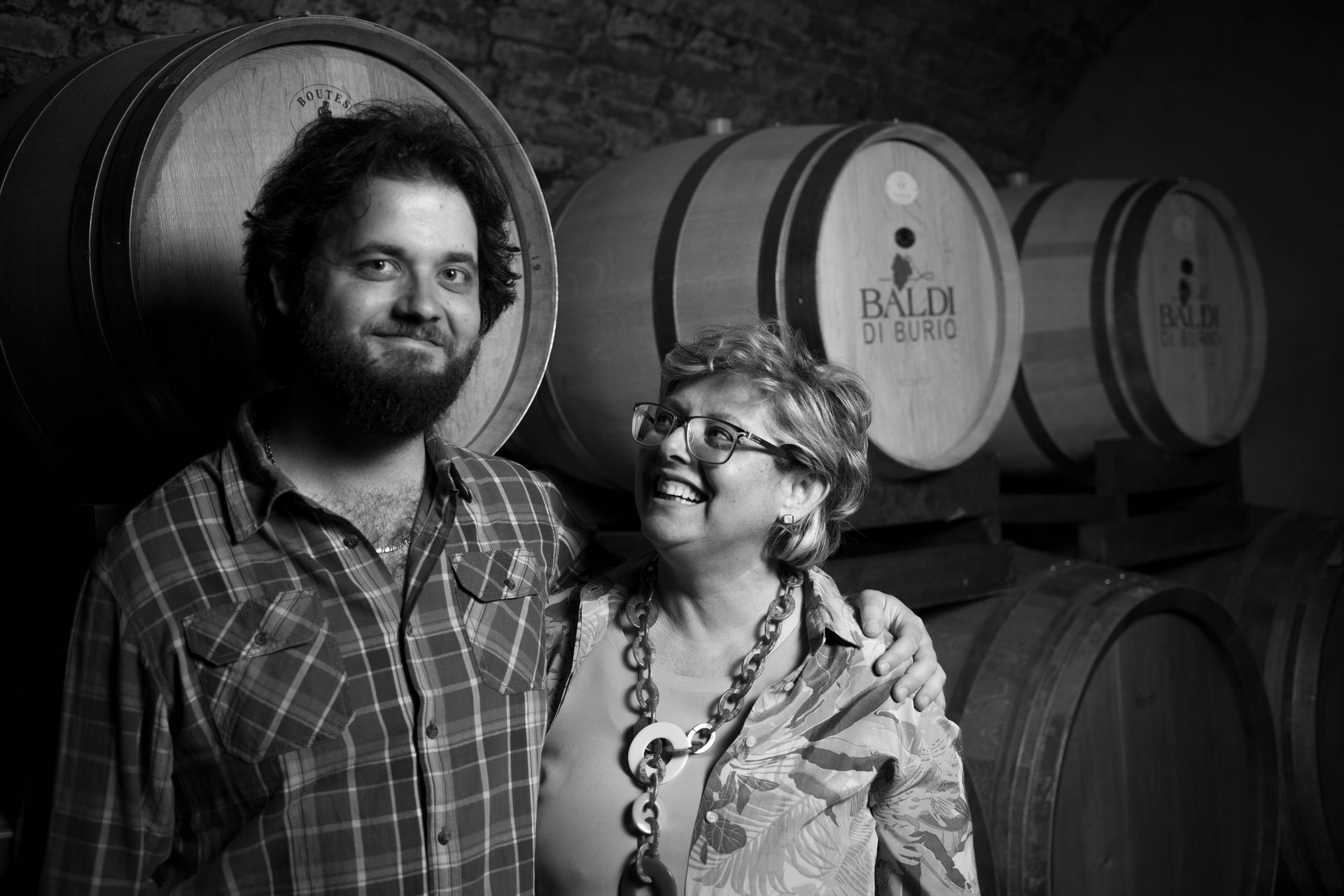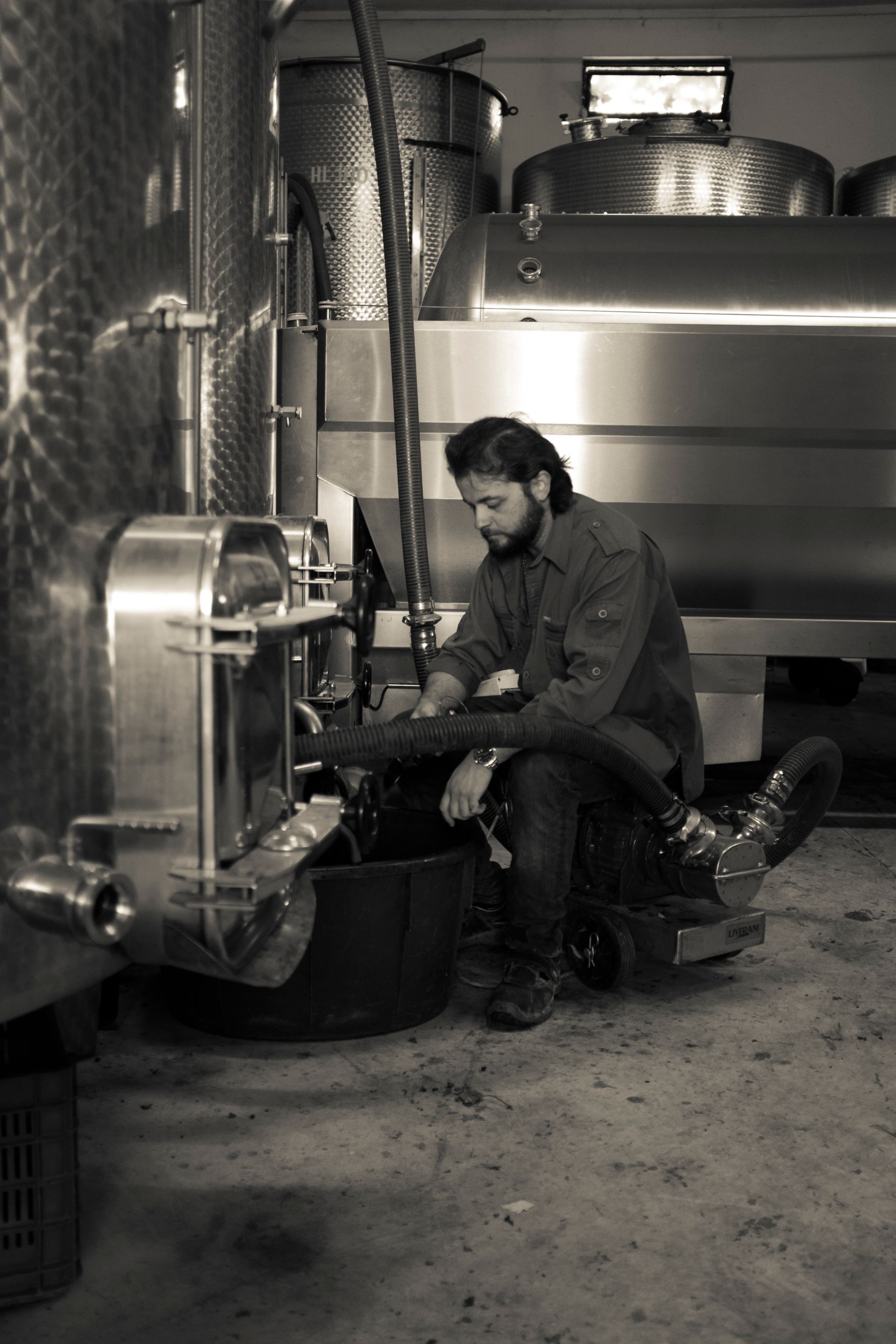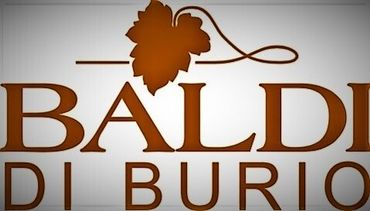“...UN PAESE CI VUOLE, non fosse che per il gusto di andarsene via. Un paese vuol dire non essere soli, sapere che nella gente, nelle piante, nella terra c’è qualcosa di tuo, che anche quando non ci sei resta ad aspettarti”.
da “La luna e i Falò” di Cesare Pavese
Tradizione per noi significa affrontare il cambiamento rimanendo sé stessi, con l'umiltà di chi conosce il duro lavoro e l'ambizione di chi punta sempre più in alto!
Da sei generazioni produciamo e trasformiamo la nostra uva sulla collina di Burio, al centro del Piemonte enologico, dove Langhe, Roero e Monferrato si incontrano.
Oggi le nostre viti sono allevate con certificazione Biologica, mantenendo fasce di bosco e prati adiacenti e nel centro dei vigneti per favorire la biodiversità.
Oltre alla terra ci piace coltivare anche il rapporto con chi vuole conoscere ed ama il nostro territorio, per questo siamo felici di ricevere visitatori che vogliono scoprire cosa c'è dentro una bottiglia del nostro vino.
la Collina di Burio
crocevia dei grandi vini del Piemonte
Tre valli circondano la nostra terra, tre confini: a Est la Val Nizza, culla del grande Rosso del monferrato, la Barbera; a Sud e ad Ovest la Val Tinella, da cui provengono i migliori Moscati e spartiacque tra il Monferrato e la Langa dei grandi Nebbioli; a nord la valle del fiume Tanaro, che ci divide dalla patria dell'Arneis: il Roero.
La nostra terra si trova così nel crocevia delle zone più importanti della viticoltura, nel centro enologico del Piemonte!
In questa posizione privilegiata nel corso dei secoli si sono dunque impiantate le migliori varietà di ogni zona, che ci danno vini caratterizzati da freschezza, potenza, complessità e longevità.
Sul finire del '700 per mano di un geniale viticoltore, il Marchese Filippo Asinari, è giunta dalla Borgogna un'altra varietà, lo Chardonnay, che nei nostri suoli marnosi, ricchi di calcare e gesso, ha trovato un habitat ideale, con vini di carattere e fortemente identitari: oggi possiamo considerare a buon titolo quest'uva tradizionale, pur non essendo autoctona.
la Famiglia Baldi
viticoltori dal 1874
Viviamo dove lavoriamo e per questo ci piace considerare i vigneti come il giardino di casa, e come un giardino li rispettiamo e abbiamo cura della loro salute.
Per questo oltre alla certificazione Bio abbiamo creato fasce di rispetto adiacenti ai vigneto e nel centro della collina, dove manteniamo cespugli e piante ad alto fusto per favorire la biodiversità.
Con lo stesso obiettivo portiamo avanti progetti di ripopolamento faunistico, produciamo tutta l'energia elettrica necessaria alla produzione e recuperiamo le acque piovane per contenere il consumo idrico.
Noialtri, la famiglia Baldi, ci siamo stabiliti nella cascina adiacente alle vigne verso la metà del XIX secolo, a servizio di Luigi Lanzavecchia, Conte di Burio e signore del castello che domina il colle.
Dopo molti anni di duro lavoro, nel 1874, avevamo risparmiato abbastanza da poter comprare dal Conte una prima vigna, il Balau, chiamata anche "la vigna del Signore" perchè dava sempre qualità eccellente e non prendeva mai la grandine!
Grazie al salario ed al vigneto finalmente di proprietà negli anni successivi abbiamo potuto comprare un aratro, un bue e altra terra, acquisendo a poco a poco quasi tutta la proprietà dei nobili.
“ … YOU NEED A VILLAGE, if only for the pleasure of leaving it. Your own village means that you are not alone, that you know there’s something of you in the people and the plants and the soil, that even when you are not there it waits to welcome you.”
“The Moon and the Bonfire” by Cesare Pavese
Tradition for us means facing change while remaining ourselves, with the humility of those who know hard work and the ambition of those who always aim higher!
For six generations we have been producing and transforming our grapes on the Burio hill, in the center of wine-making Piedmont, where Langhe, Roero and Monferrato meet.
Today our vines are grown with organic certification, maintaining strips of woodland and meadows adjacent to and in the center of the vineyards to encourage biodiversity.
In addition to the land, we also like to cultivate relationships with those who want to know and love our territory, which is why we are happy to receive visitors who want to discover what's inside a bottle of our wine.
the Burio hill
crossroad of the great Piedmont wines
Three valleys surround our land, three borders:
to the east Nizza Valley, cradle of the great Red grape of Monferrato, the Barbera;
to the south and west the Tinella Valley, from which the best Moscatos come and the watershed between the Monferrato and the Langhe of the great Nebbiolo based wines;
to the north the Tanaro Valley, with the big omonimous river, which divides us from the homeland of Arneis: the Roero.
Our land is thus located at the crossroads of the most important viticulture areas, in the winemaking center of Piedmont!
Over the centuries, the best varieties of each area have therefore been planted in this privileged position, giving us wines characterized by freshness, power, complexity and longevity.
At the end of the 18th century, thanks to a brilliant winemaker, the Marquis Filippo Asinari, another variety arrived from Burgundy, the Chardonnay, which found an ideal habitat in our marly soils, rich in limestone and chalk, with wines of character and strongly identifying: today we can rightly consider this grape traditional, even though it is not native.
the Baldi family
vine growers since 1874
We live where we work and for this reason we like to consider the vineyards as our home garden, and like a garden we respect them and take care of their health.
For this reason, in addition to the organic certification, we have created buffer zones adjacent to the vineyards and in the center of the hill, where we maintain bushes and tall plants to encourage biodiversity.
With the same objective we carry out wildlife repopulation projects, we produce all the electricity necessary for production and we recover rainwater to limit water consumption.
We, the Baldi family, settled in the farmhouse adjacent to the vineyards in the mid-19th century, at the service of Luigi Lanzavecchia, Earl of Burio and lord of the castle overlooking the hill.
After many years of hard work, in 1874, we had saved enough to be able to buy a first vineyard from the Count, the Balau, also called "God's vineyard" because it always gave excellent quality and never took hail!
Thanks to the salary and the vineyard we finally owned, in the following years we were able to buy a plow, an ox and more land, gradually acquiring almost all of the nobles' property.
In 1914, on the threshold of the world war, the three daughters of Count Lanzavecchia, now elderly, with little income and without heirs, made a pact with our family: we thus provided for every need of the three ladies, assisting them in every way until the death of the last of them, in exchange we received as an inheritance the last vineyard they owned (named Castelburio, because it’s right in front of the castle) and the farmhouse.
In all these years we have preserved the memory of our family, the fears, the successes, the luck and the disappointments which compose the story of our family and of the small hill of Burio, the heart of Piedmont.
«... UN VILLAGE EST NÉCESSAIRE, ne serait-ce que pour s'évader. Un pays, c'est ne pas être seul, savoir que dans les gens, dans les plantes, dans la terre, il y a quelque chose qui vous appartient, qui même lorsque vous n'y êtes pas, vous attend".
Extrait de « La Lune et les feux» de Cesare Pavese
La tradition, pour nous, c'est affronter le changement tout en restant soi-même, avec l'humilité de celui qui sait travailler et l'ambition de celui qui vise toujours plus haut !
Depuis six générations, nous produisons et transformons nos raisins sur la colline de Burio, au centre du Piémont viticole, à la croisée des Langhe, du Roero et du Monferrato.
Aujourd'hui nos vignes sont cultivées en certification biologique, en conservant des bandes boisées et des prairies adjacentes et au centre des vignes pour favoriser la biodiversité.
Au-delà de la terre, nous aimons aussi cultiver des relations avec ceux qui veulent connaître et aimer notre territoire, c'est pour ça que nous sommes heureux de recevoir des visiteurs désireux de découvrir le contenu d'une bouteille de notre vin.
la colline de Burio
croisement de grand vins du Piemont
Trois vallées entourent notre territoire, trois frontières : à l'est le Val Nizza, berceau du grand Rouge du Monferrato, Barbera ; au sud et à l'ouest le Val Tinella, d'où proviennent les meilleurs Moscato et la ligne de partage des eaux entre le Monferrato et la Langa du grand Nebbiolo ; au nord, la vallée du fleuve Tanaro, qui nous sépare de la patrie d'Arneis : le Roero.
Notre terrain est ainsi situé au carrefour des zones viticoles les plus importantes, dans le centre viticole du Piémont!
Au fil des siècles, les meilleurs cépages de chaque terroir ont donc été plantés dans cette position privilégiée, nous donnant des vins caractérisés par la fraîcheur, la puissance, la complexité et la longévité.
A la fin du XVIIIe siècle, grâce à un brillant vigneron, le marquis Filippo Asinari, importe de Bourgogne un autre cépage, le Chardonnay, qui trouva un habitat idéal dans nos sols marneux, riches en calcaire et en craie, avec des vins de caractère et fortement identifiant : on peut aujourd'hui à juste titre considérer ce cépage comme traditionnel, même s'il n'est pas indigène.
la famille Baldi
vignerons dépuis 1874
Nous vivons là où nous travaillons et pour cette raison nous aimons considérer les vignes comme notre jardin potager, et comme un jardin nous les respectons et prenons soin de leur santé.
C'est pour cette raison qu'en plus de la certification biologique, nous avons créé des zones tampons à côté des vignes et au centre de la colline, où nous entretenons des buissons et des plantes hautes pour favoriser la biodiversité.
Avec le même objectif nous réalisons des projets de repeuplement faunique, nous produisons toute l'électricité nécessaire à la production et nous récupérons l'eau de pluie pour limiter la consommation d'eau.
Nous, la famille Baldi, nous sommes installés dans la ferme adjacente aux vignes au milieu du XIXe siècle, au service de Luigi Lanzavecchia, comte de Burio et seigneur du château dominant la colline.
Après de nombreuses années de dur labeur, en 1874, nous avions économisé suffisamment pour pouvoir acheter au Comte un premier vignoble, le Balau, aussi appelé «le vignoble de Dieu» car il donnait toujours une excellente qualité et ne prenait jamais de grêle!
Grâce au salaire et au vignoble que nous avons finalement possédés, nous avons pu, dans les années suivantes, acheter une charrue, un bœuf et davantage de terres, acquérant progressivement la quasi-totalité des propriétés des nobles.
DEGUSTAZIONI GUIDATE E VISITE ALLA CANTINA
tours and wine tastings - dégustations et visites
lunedì - sabato
monday - saturday
lundi - samedi
8,00 - 12,00 / 15,00 - 19,00
domenica - sunday - dimanche
9,00 - 12,00
contattaci - contact us - contactez-nous
Contattaci - Contact us
Esportazioni, vendite all'ingrosso
Exports, wholesales,
interlational relations
+393462310433 GABRIELE
Visite guidate e degustazioni
Guided tours , tastings
+393489278005 GISELLA
e- mail: info@vinibaldi.it
